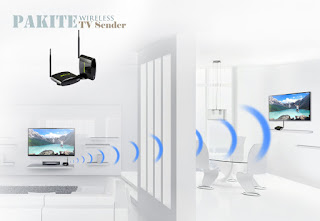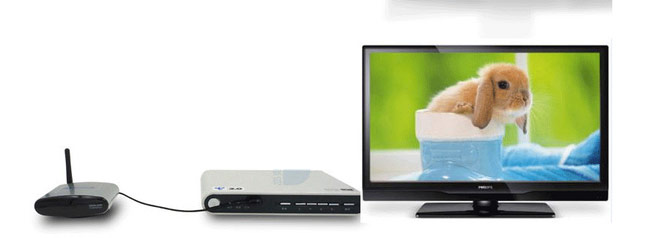Official site: www.pakite.com. How To Guides
Follow: Flickr(Phones Watches) . Flickr . Youtube(Watches) and QQ live(Electronic) online.
Saturday, January 28, 2017
How to Avoid Distortion in A/V Transmitters
Sunday, January 22, 2017
Meeting video sender
What is a video sender?
How do they work?
Where do I get a video sender?
Saturday, January 21, 2017
Some skills about wireless av sender

PAKITE is manufacture of wireless av sender,Located in shenzhen China, Over 8 years av sender produce experience, all of PAT series is our own design patent, 2.4/5.8GHz CE FCC Certificate and RoHS had passed.
Wireless av sender is for what?
Wireless av sender is for sharing digital single from one device to another device by wireless sharing, This technology no need to connect wifi, the wireless just send and receiver between transmitter and receiver.
How to use wireless av sender?
Just connect the transmitter part with the digital source, then connect receiver part with the tv or any other device for show the video, onece power on, it will be started work, easy to use and install.
How to choose the best one?
All the wireless device is according the use environment to choose the best suitable, but not the best one.since the 2.4GHz frequency band support strong penetrated ability, and 5.8GHz frequency band is support strong anti-interference, If use in the different floor or so many walls between transmitter and receiver,we will suggest PAT-360,PAT-260 or PAT-266 for you, if use in the same room or between room, any items is ok.
What the best advantage of AV Sender?
Example: the user have one set top box but not only one tv, and many tv in the different rooms and different floor.
In this case,Typical: you have to buy many set top box and fix up cables from one room to another room, from first floor to another floor.
Tuesday, December 13, 2016
How to Change Wired Projectors to Wireless | PAKITE
Thursday, December 1, 2016
Wirelessly Send Your Cable TV Signal to Another Room
Wirelessly Send Your Cable TV Signal to Another Room
Sources: CNBgear . Wirelessly Send Your Cable TV Signal to Another Room
With wireless being the norm for so many of our electronic devices
today, it’s pretty surprising to me that the standard way to connect a cable box to your TV is still with physical cables. And the surprise
turns into annoyance when I want to put a TV in a room where I don’t
have a cable outlet.
I had this situation when I bought my current house. I wanted to put a
TV in my living room but there was no outlet there and neither option
for putting one in—running the wires along the ceiling and floorboards
inside the house or running them over the roof on the outside—was
desirable.
Fortunately, after doing some research, I found the PAKITE 8 Channel Remote Wireless Video Transmitter & Receiver System(known as av sender, and one set av sender contains a transmitter and a receiver or two receivers), which sends the
cable TV signal wirelessly from the cable box in my bedroom to my living
room TV. Since then, I’ve upgraded my system from the PAT-580 model wireless HDMI,
which has a single input and support transmit HDMI signals wirelessly by 300 Meters, but it's output resolution is 720x576P, not is 1080P, but I found it's very ok when I watch the TV shows. And their after services is very good!
Note: These systems can also be useful even if you
have them in the same room as your TV, but connecting devices with a
cable isn’t ideal, e.g. if the TV is mounted on the wall.
Recommend reading:
PAKITE Brand HDMI Wireless A/V Sender - feature
PAKITE Brand HDMI Video Sender - Parameter
PAKITE HDMI Video Sender - Advantage
Wireless digital/analog TV sender | PAKITE
PAKITE Wireless IR Extender PAT-433
Wednesday, November 23, 2016
The difference between Smart series and Wireless series tv sender | PAKITE
recommend reading:
Two TV sharing one set-top box in my house
PAT-556, Send Your TV Signal Wirelessly to Another Room
What is wireless a/v sender?
Thursday, September 15, 2016
PAKITE PAT-433 Wireless IR Remote Control Extender
Deep research about Wireless Audio/Video Sender
PAT-260 Wireless Strong Penetration A/V Transmitter from PAKITE
How to improve the sense of experience?
Tuesday, September 13, 2016
Coming HDMI Wireless Audio Video Senders
recommend reading:
Transfer a Wireless TV Signal | PAKITE
Wireless HDMI Connection | PAKITE
The difference between Smart series and Wireless series tv sender | PAKITE
What is HDMI Wireless A/V Sender? | PAKITE
My family use it, and it's very good wireless transmit device
How do you connect wireless Audio Video Transmission Kit?
- 3 pcs Mini - jack to RCA Jack Cable ;
- 1 pcs IR Cable ;
- 2 pcs 5V/1A Power adapter ;
- 1 pcs User Manual;
recommend reading:
Wireless IR Remote Control
Two TV sharing one set-top box in my house
Transfer a Wireless TV Signal | PAKITE
Video show - wireless connection for TV and any other device with RCA/AV port | PAKITE
Wireless HDMI Connection | PAKITE
Newest wireless audio video transmission device with HDMI jack | PAKITE
Friday, September 9, 2016
How Wireless audio video TV Transmitter Work
What can PAT-220 AV Wireless Transmitter and Receiver do ?
recommend reading:
What is HDMI Wireless A/V Sender? | PAKITE
Newest wireless audio video transmission device with HDMI jack | PAKITE
Wireless HDMI Connection | PAKITE
Transfer a Wireless TV Signal | PAKITE
New goods: PAKITE HDMI jack Wireless A/V Sender












